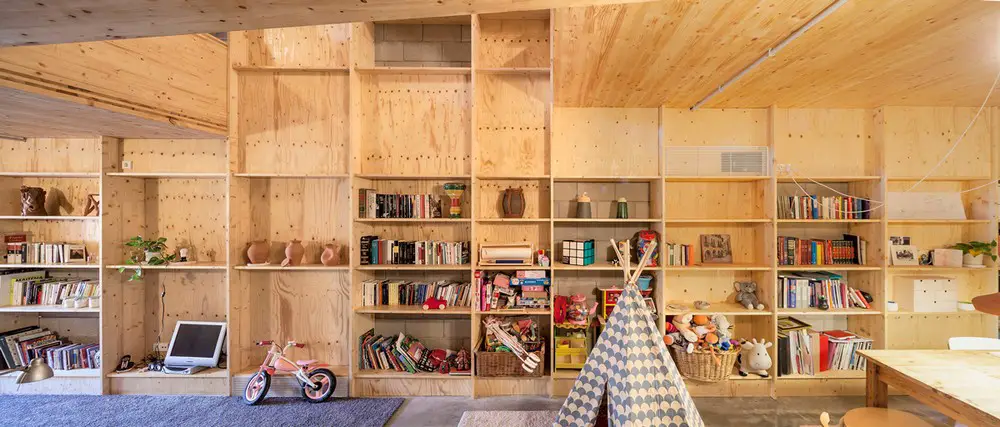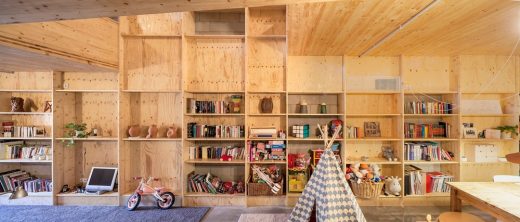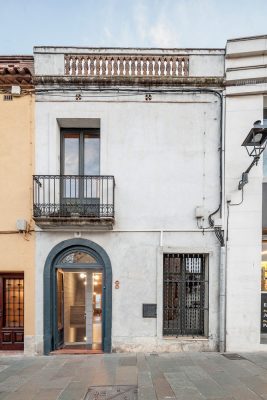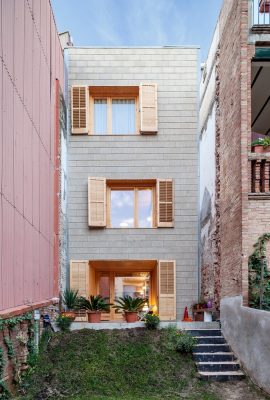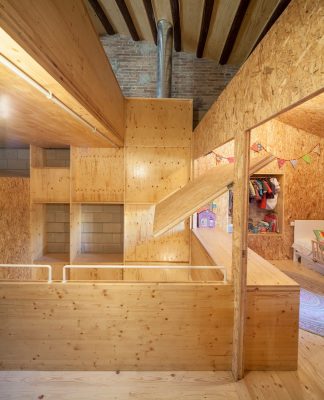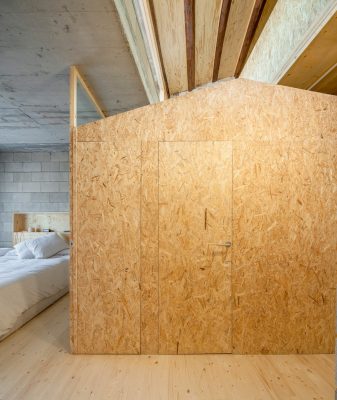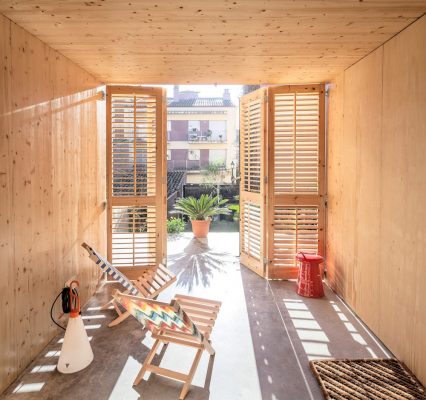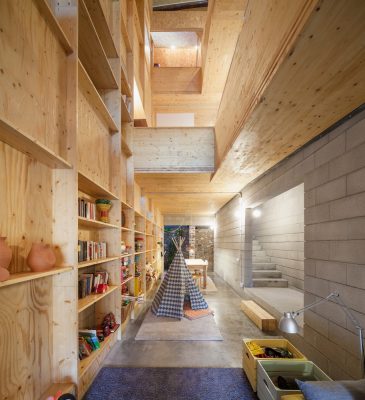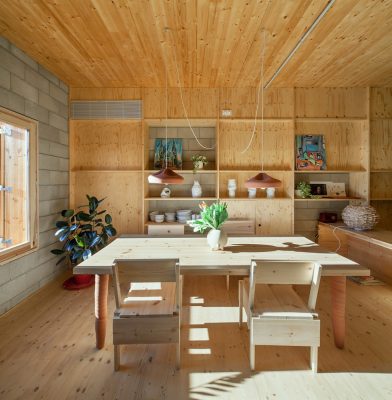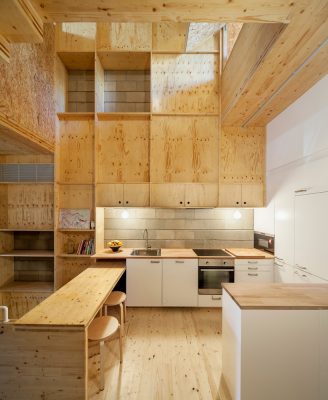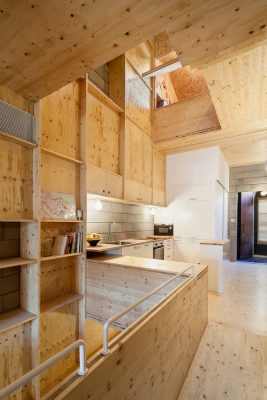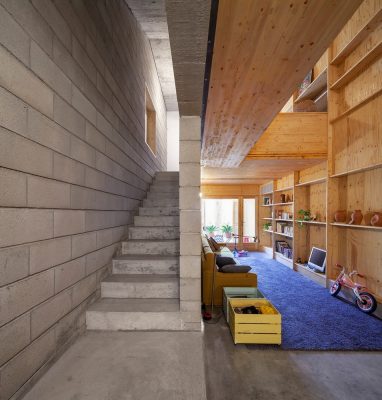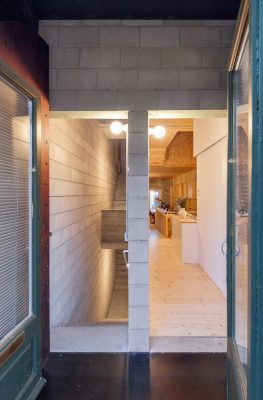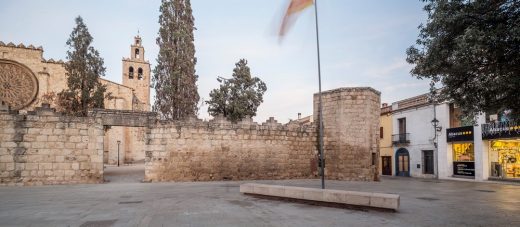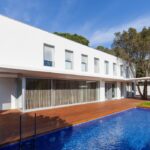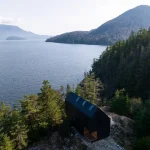Sant Cugat House Photos, Barcelona Property, Catalan Interior Design Images, Spanish Architecture
Sant Cugat House, Barcelona
Contemporary Catalunya Interior Renovation design by Josep Ferrando Architecture, Spain
4 Oct 2016
Design: Josep Ferrando Architecture
Location: Sant Cugat, Barcelona, Spain
A house between party walls is a project sensitive to the inhabitant and the city
Sant Cugat House
The architect Josep Ferrando resolves the complex urban conditions of the context and the site in which the house is located – less than 5 meters wide and with a particular topography that constrains the parcel between two streets situated at different heights – starting the conception of the project from the shaping of the volume.
The solution developed consists of inserting a new house of concrete blocks inside of the pre-existing home positioned between two thick walls dividing it from neighbouring houses. In this way, three volumes are generated, one serves as a storage space, another is dedicated to circulation and a third one which articulates in habitable terms all the spaces that compose the building.
The interior of the concrete house is inhabited through the superposition of laminated wooden panels which adapt to the topography, organize the space and convey a warm atmosphere to the living spaces.
The challenge of this new home lies in approaching the process leading to the architectural project with creative and constructive line guides able to resolve the decisive conditions inherent to the project. Concretely, for Josep Ferrando, one of the young Spanish architects with major International projection, the starting point was to recreate a completely new house between walls in the centre of Sant Cugat, which is considered a Cultural Patrimony, and therefore obliged the preservation of the house’s main facade and roof. In addition, the building had to be less than 5 meters wide and deal with a complex topography which constrained the site between to streets with different heights.
Ferrando, far from limiting his action to a predictable and submissive design constrained by the restrictions of the context and plan, chose to resolve the complexity of the assignment constructing starting the conception of the project from the shaping of the volume. A new house made of concrete blocks has been inserted in the pre-existing building.
The dividing walls adjacent to the neighbouring houses increase its thickness and function as a filter and service space generating on one side a place for storage while on the other a “promenade” or circulation space. The void resting between both service spaces becomes the living area. The thickness of the walls construct interior facades in longitude and increase the perception of the space from a transversal view.
In the interior of the concrete house, L-shaped metal profiles sustain wooden panels which adapt to the topography and the openings of the pre-existing facade, organizing the space and conveying a warm atmosphere to the living spaces. The height differences between the floors generate crossing views and bring light to every level of the house, including the lower ground floor, thanks to the void carved in the upper storeys. The program of the house is fragmented, breaking the continuity of the horizontal plan in a way that Adolf Loos denominated “Raumplan”.
Overall, the sequence of a house within a house goes from more urban materials to more domestic ones, building an empty joint between them which allows light and views to circulate through all spaces. The internal void converts itself in the public area of the house. This is the space in which all the views cross and relations are built through the “railing-furniture” delimitating it.
Located in the historical centre of Sant Cugat, a house between party walls is a project sensitive to the inhabitant and the city. A fragment that fits with the complex urban conditions: the Monastery, the cultural heritage of the street façade and the topography.
The party walls have an increased thickness to serve as storage and servant space, working as furniture and “promenade”. The horizontal slabs are adapted to the topography and the program of the dwelling unit with a “raumplan” system. A unique construction gesture to build the entire home, as if it were a hollowed piece of wood, shaped through light, void and visuals to interior and exterior.
Sant Cugat House – Building Information
Dates: 2011 – 2015
Site: C/ de la Torre 8, Sant Cugat (Barcelona)
Surface: 225 sqm
Budget: 300.000 Euros
Architect: Josep Ferrando Architecture
Constructor: ROOM S.L.
Quantity Surveyor: Toledo-Villarreal
Structures: Joseph Nel.lo
Collaborators: Marta Arias+ Carlo Castila + Jordi Perez + Felix Platero + Goun Park + TaeGweon Kim + Adria Orriols + Clara Vidal + Borja Rodriguez
Photography ©Adrià Goula
Sant Cugat House, Barcelona images / information received 130616
Josep Ferrando Architecture on e-architect
Location: Sant Cugat, Barcelona, Catalunya, north east Spain, southwestern Europe
Architecture in Northeast Spain
Contemporary Architecture in Barcelona – architectural selection below:
Barcelona Architecture Tours by e-architect guides
Barcelona Houses
Guest pavilion 1401, Sa Tuna, Begur, Catalunya
Design: Nordest Arquitectura
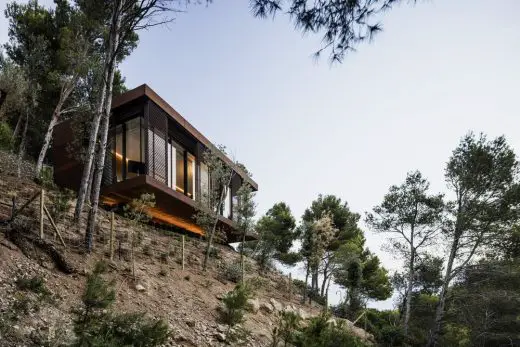
photo : Adrià Goula
House in Sa Tuna, Begur
Les Franqueses del Vallés house
Design: CPVA Arquitectes
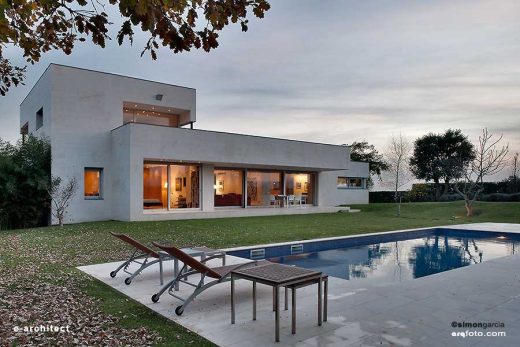
photo : Simon Garcia
Les Franqueses del Vallés house
Casa M Barcelona
Design: RTA-Office
Comments / photos for the Sant Cugat House, Barcelona design by Josep Ferrando Architecture page welcome

